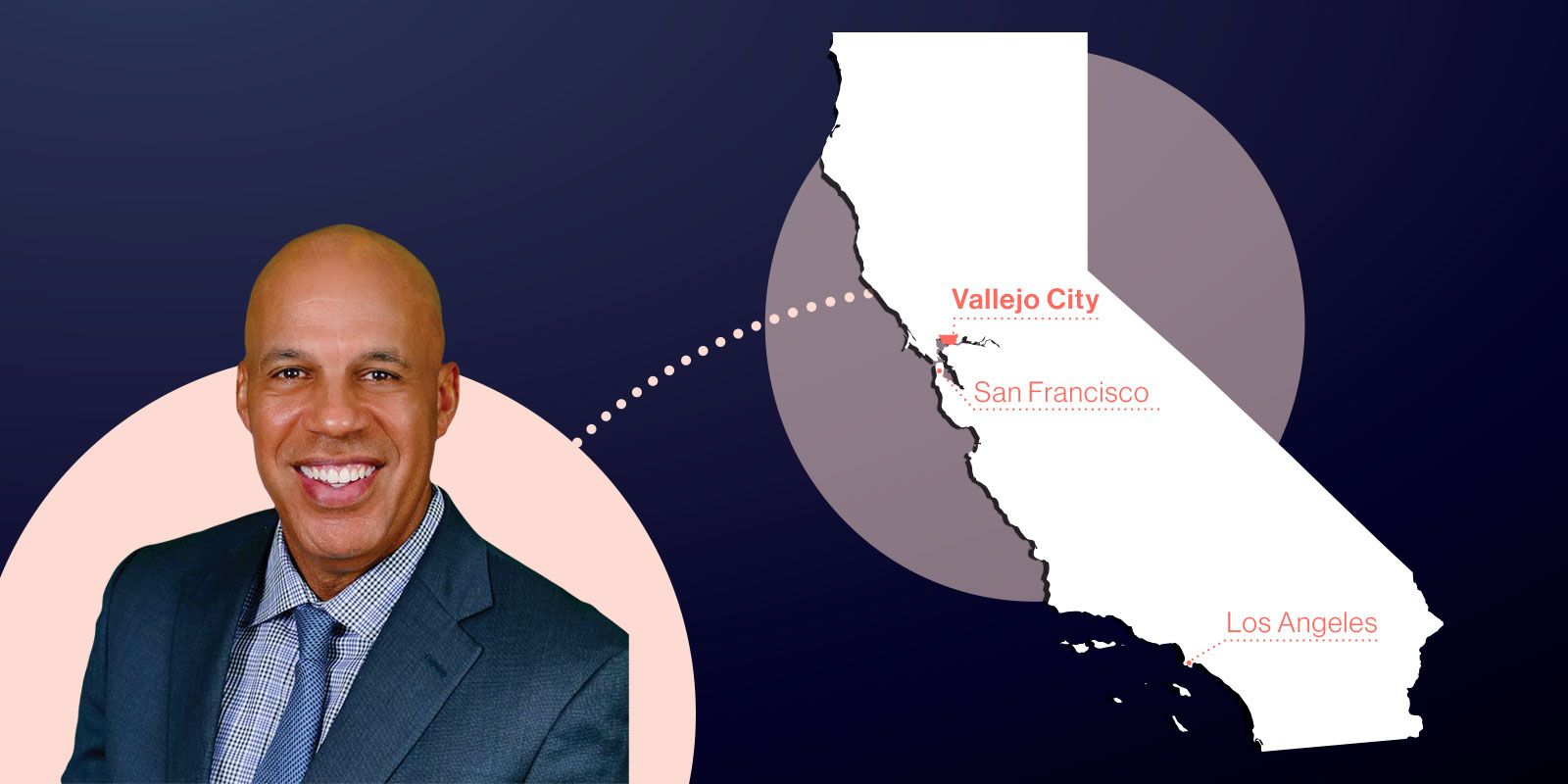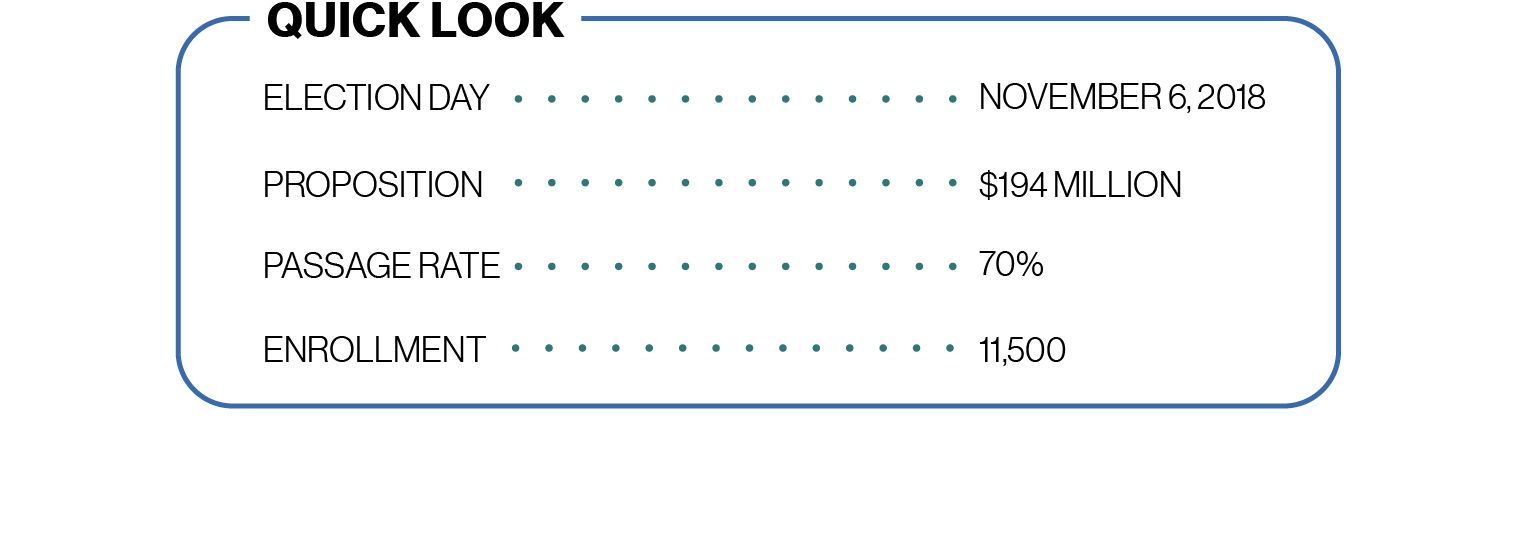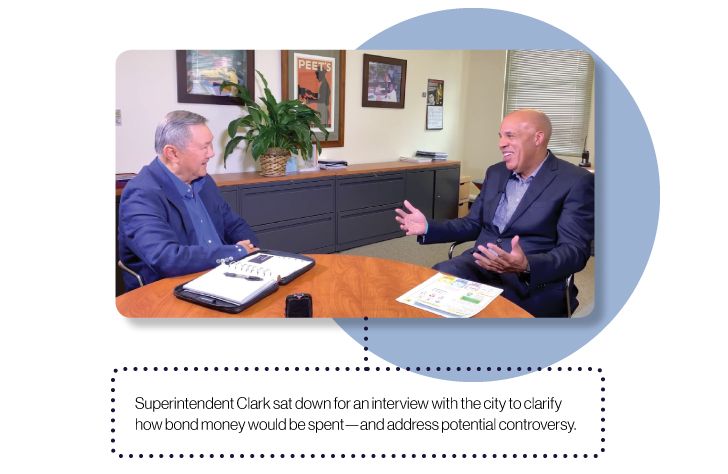Bond Campaign Deep Dive: Vallejo City USD
Gaining Momentum · Practicing Year-Round Transparency · Utilizing Community Leaders


When Dr. Adam Clark accepted the superintendency at Vallejo City Unified, it was a “struggling district,” as he puts it. Sitting on the northern edge of California’s Bay Area, the district has dealt with “declining enrollment, an increase in charter schools, and high chronic absentee rates,” Clark tells SchoolCEO. Twenty years ago, a major naval base closed nearby, instigating an economic collapse. The district later went bankrupt—as did the city of Vallejo itself.
Passing a bond in Vallejo, then, would be an uphill battle. But that’s exactly what drew Clark to the district, one year before the 2018 bond campaign. Hired in the aftermath of these challenges, Clark “was brought in to improve this district, to improve outcomes for students,” he says.
“Very quickly I realized that a major factor in that was our facilities—they were literally falling apart,” he tells us. “We hadn’t had a bond in over 20 years, though the surrounding communities had passed multiple. This one was long overdue.”
Lessons from Vallejo City
- Bonds run on a district's positive momentum
- Stay transparent year-round
- Community leaders are not-so-hidden resources
Bonds run on a district's positive momentum.
“When people like what they’re hearing in terms of the direction an organization’s going, they want to learn more,” Clark says. It was the district’s job, then, to make sure they conveyed the positive changes they were making.
“I walked into a failing district, but once I got here, once I started talking to teachers and kids and parents, I realized very quickly that we’re no different than any other district,” Clark explains. “There are committed people here who care about kids, and we have great kids! But there was just such a negative narrative about the district, and a lot of it had to do with the school board, or the previous superintendent, or the bankruptcy. The narrative around the district was negative, but a lot of that information was false.”
So Clark worked to course-correct the district’s image. “For the last two years, I’ve just been highlighting the good things that we are doing,” he says. “With the bond or without the bond, we’re on a positive message campaign.” Clark revitalized the district’s Facebook page and even built a brand new website especially for Vallejo’s positive stories. “Teachers could take pictures of a project in their class, send them to a designated email address, and we’d post them on this site,” he explains.
Even when there were potentially negative stories to tell, VCUSD gave them a positive spin. “Twenty years ago, we had 20,000 students in 22 schools, but when I took over years later, we only had around 12,000,” Clark explains. “So I’ve had to close some schools. But even then, the message is, Look, I don’t want to invest taxpayer money into a school only to have to close it a year or two later because of declining enrollment. So we’re going to close several schools over the next couple years, and then we’re going to use the bond money to improve the properties that we know we’re going to keep.”
And that message seemed to resonate with the community. “They saw that we were being responsible. We were being good stewards of the taxpayers’ money,” Clark says.
Stay transparent year-round.
“As I said, we’ve been bankrupt before,” Clark reiterates. “We wanted to make sure we gained the trust of our community.” Regaining that confidence required transparency—before, during, and after the bond process.
It began with 60 community meetings before the recommendation even reached the board. “We’re always in the news about our deficit and having to do layoffs,” Clark explains, “so part of our presentation for those meetings had to do with our current budget finances—really educating the public on how schools are financed and how there’s so little money for us to use on facilities.” The district was also transparent about their schools’ crucial needs—even when they weren’t pretty. “We shared pictures of our second-grade kids wearing winter coats inside because our heating and air systems needed to be replaced,” Clark says. The image may not have been flattering for VCUSD, but it hit home for community members.
Once the campaign itself ramped up, Clark kept the district’s doors wide open. “As the superintendent, I started to post all of my communications with the school board and all of my board presentations on my website, so that individuals could actually see what we were talking about behind the scenes,” he says. He also made a point of keeping the media in the loop. “I formed a positive relationship with our local newspaper reporter. When I send out messages to the whole district, I include her,” he says. “If she ever has questions about anything, I’ll share what I can about the situation.”
That openness doesn’t just encourage trust; it discourages misinformation. “She wasn’t just writing her stories off of hearsay,” he explains. “She could come directly to me and get the most information that I could legally share with her.”
Since the bond passed, the district has stayed committed to accountability. “We were not required to put together an oversight committee, but we still have one,” Clark says. “We were transparent around the campaign and the pre-campaign, so we want to be transparent around the implementation phase.” Clark even created a bond section of the board agenda. “I wanted anyone with any amount of experience to be able to look at that agenda and see clearly where the bond dollars were,” he says.
Throughout the process, from start to finish, Clark emphasized his own personal limitations. “I in no way wanted to give people the message that I had all the answers,” he tells SchoolCEO. “I didn’t want to tell people there was a silver bullet that could save this district. All I could do was bring people together.”

Community leaders are not-so-hidden resources.
And Clark did bring the people of Vallejo City together. Since he entered the district two years ago, he’s built relationships with the city council, the county office, the police and fire departments, and several local leadership agencies—just to name a few.
“I’m a very collaborative leader,” he tells SchoolCEO. “So as I got out into the community and started engaging with community leaders and community members, I was able to share my philosophy of the district—what areas I saw that we needed to improve in, as well as the efforts that we were already taking to improve our situation.”
But he didn’t stop at local organizations. Clark worked to get bond endorsements from local politicians, too. “It was a big local election year—we had a city council election, we had a county supervisor election,” he said. “So we got endorsements from others who were running.” Asked how he formed those connections, Clark responds simply, “Just out talking with our community. We called up individuals who were running for city council, we sat down, we talked to them, we shared our story, and we asked for their endorsement. And we got it.”
Those partnerships came in handy during the campaign. Like most districts, VCUSD couldn’t actively advocate for the measure, only provide information about it. But others, including their community partners, could advocate. “When candidates would go around and walk precincts, we would give them our door hangers and information as well, and our team would actually do walks with them,” Clark explains. “It was really a no-brainer.”
VCUSD even found one incredibly unlikely ally. “Usually there’s a negative relationship between a school district and a charter school, but we actually partnered with our charter schools,” Clark says. “We agreed to give them a portion of the bond money to update their facilities, and so they supported it. Instead of being at odds with one another, we were able to come together and pursue this bond together.”
When Election Day came in November 2018, Measure S, VCUSD’s $194 million bond measure, passed with an approval of nearly 70%. “It was amazing that this passed,” Clark gushes. “I think there were only three other districts throughout California who passed a two-thirds facilities bond, and two of the ones who passed were only for $5 million or $10 million.”
Even if the bond hadn’t passed, Clark says, the work of the campaign had its own value. It united the community around the district’s messaging—and that’s a gift that keeps on giving. “Make sure that the goal of the bond is aligned with the goal of the district,” he advises. “Then win, lose, or draw, your message is out there, so you can get more community support toward those goals, toward those outcomes for students.”

SchoolCEO is free for K-12 school leaders. Subscribe below to stay connected with us!

